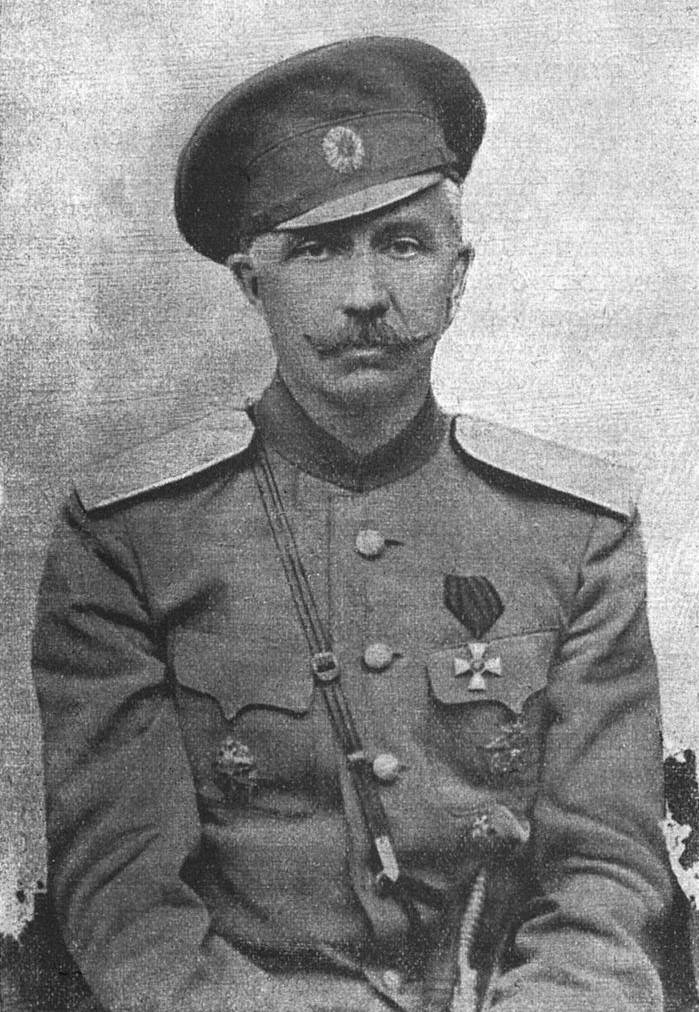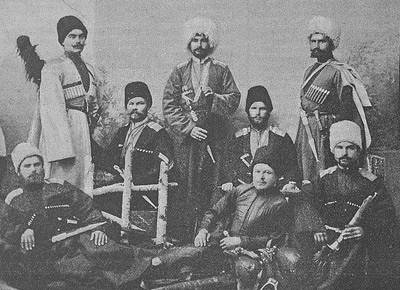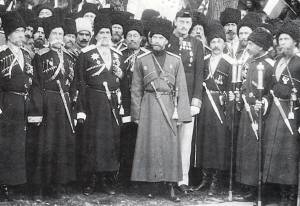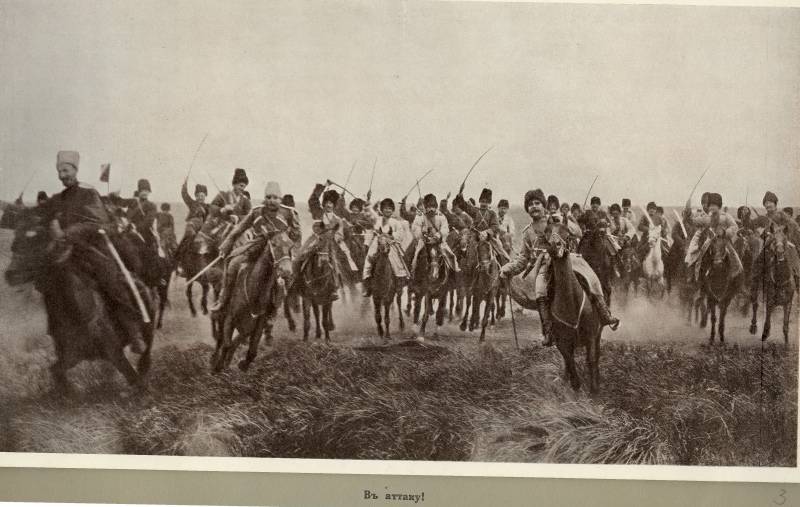Chopped battalion, or Attack at Chulcice
Shel July 1915 - completed the Lublin-Kholm operation, and the troops of the North-Western Front fought fierce rearguard battles with the German 11 and Bug, and the Austrian 1 and 4 armies.
Covering the 3 Army, divisions of the 2 Consolidated Cossack Division distinguished themselves - they saved the infantry of the 14 Army Corps.
On the night of 22. 07. 1915 y der. At the moment, the German infantry of the 22 th reserve corps broke through at the junction of the divisions of the 14 corps, between the 71 infantry regiment of the 18 infantry division and the 279 infantry regiment of the 70 infantry division. 71 th regiment went to the village. Saigatse - and the German infantry rushed into the breakthrough. The 279 th regiment was also preparing to retreat - and this put the battery, the headquarters and the rear of the compound, which Savin would have to leave, in a difficult position.
Analyzing the cavalry attacks of the Russian cavalry in the First World War I. Rubets noted the equestrian attack of 2 (Esaul Negodkov) and 6 (Cornet Kulesh) of hundreds of 1 of the Volga Cossack regiment, held in villages. Chulchitse and Posad Savin - and the enemy’s advance was delayed, but hundreds suffered heavy losses, and Korush, the cornet, was killed.
How did this momentous battle episode happen?
At one in the morning, the German infantry broke through at the junction of the 71 and 279 infantry regiments. And, as we noted - rushed into the breakthrough.
The commander of the 2 Consolidated Cossack Division put forward reserve hundreds of the 2 Volga Regiment to parry the enemy 1 breakout. PN Krasnov noted in his memoirs how the 2-I and 6-I hundreds of regiment in the equestrian ranks attacked the German infantry that had broken through the Russian front - and not only "made a panic" on the enemy, but also cut the Germans battalion. The general recalled how, in the lunar twilight against the background of a burning village and a round hill in the distance, brightly lit by the glow of fires, "like needles" appeared the silhouettes of German infantrymen. Immediately whistling and slammed the bullets. The commander of the Lokhvitsky regiment who came up said that the regiment could not hold on longer and was moving away.

P. N. Krasnov
The reserve hundreds were called - Cossacks who approached at a trot removed their hats, were baptized before the battle and threw rifles from behind their backs, preparing for a foot battle.
The division commander ordered rifles to be worn - an attack in the equestrian ranks. Esaul Negodkov received an order: with lava (2-i hundred in the first line, and behind her 6-I at a distance of 300 steps) to attack the enemy’s advancing infantry; the left flank - the direction along the burning village, the right - to the top of the Lysa Hora, a brightly lit fire. Go two lavas, ahead of 2-i hundred, followed by 6-i. Direction - on the hill. Boom up a little more.
- How is the locality? Passable? There are no swamps and ditches?
- Completely passable ...
Hundreds rode trotting, building lava. Cossack towers flashed. Flames of rifle shots flashed, and when the Cossacks approached the enemy for half a kilometer - a terrible rifle-machine-gun fire was opened. And then - a terrible and short boom, the rattle rifle and silence. And - "our victory."
Another eyewitness, recalling the attack, noted the severity of the situation - as the advanced Cossacks (6 people), led by the gallant Horunzhim Kulesh, appeared at the German trenches. Horses were killed under them - but the Cornish with 6 Cossacks jumped into the trench and began to work with daggers. During the fight, Kulesh was shot with a rifle at close range - a bullet hit an officer in the mouth. A lot of Germans crowded around 6 brave souls. But then the rest of the Cossacks attacking hundreds arrived - the cutting began.
A rumor spread through the front of the German division that huge Cossack masses were attacking — and the German chains began to retreat. The head of the German division put forward a reserve battalion - which ran to the battlefield. And then he ran into him, having passed through the 6-hundred, 2-hundred, under the command of Esaula Serikov. German infantrymen threw rifles, raising their hands up. Carrying out the order of the commander and not losing the tempo of the attack, the Cossacks chopped them up and rushed on - to the GOS. dv der. Becoming, which housed the headquarters of the German division. The latter rushed to carry off the legs.
As a result, the swamp and total darkness stopped the further advance of the Cossacks. The loss of Volgians is about 25 people, while the Germans lost only 500 infantrymen who were hacked over 2. Moreover, the actual damage from the XNUMX hundreds of nighttime horse attacks was not so important - the moral upheaval of the German troops advancing towards Wlodawa was great. The following events showed how great it was.


Cossacks of the 1 Volga Regiment.
According to the captured German officers captured subsequently, the whole day following the Cossack attack was devoted to calming down the infantry, shocked by the night attack of two hundred. To guard the entrenched German infantry, a regiment of German cavalry was advanced, which stood in the reserve column not far from the Vlodavskoe highway.
In the evening, the Dobrynia armored car arrived at the disposal of the rearguard commander of the 14 Army Corps and the commander of the 2 Consolidated Cossack Division. In the 23 hour, “Dobrynya” drove down the highway towards the Hill (we wrote about the “Dobrynia” raid - see How Russian armor fought. Part of 2. Under Prasnysh and Tomashev). We recall only that in 3 km from the Russian escort line, he noticed a German cavalry regiment and began to fire at him from a cannon. The Germans rode back - to their own. German infantry took its cavalry for the Cossacks and met them with murderous rifle and machine-gun fire. The confusion stopped only in the morning. But as a result of these nightly actions of the Russian mobile units — 2 of hundreds and armored vehicles — the German offensive stopped on July 23, 24, 25 and 26. Only 27 th avant-garde came into contact with the Russians at der. Petridov, Bukov and Lukovsk.
The offensive of the enemy in this sector of the front was stopped for 5 days - which was important for the fate of the 14 Army Corps. Suddenness for the enemy and the audacity of the throw - this is the secret of the success of the night Cossack attack in Chulchits.

Information